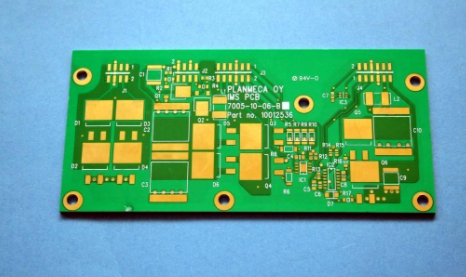The following is a detailed description of common welding defects, appearance characteristics, hazards, and cause analysis.

1. Welding
1. Appearance characteristics
There is an obvious black boundary line between the solder and the lead of the component or the copper foil, and the solder is sunken toward the boundary.
2. Harm
Can not work normally.
3. Reason analysis
1) The component leads are not cleaned, tinned or oxidized.
2) The printed circuit board is not clean, and the sprayed flux is of poor quality.
2. Solder accumulation
1. Appearance characteristics
The solder joint structure is loose, white and dull.
2. Harm
Insufficient mechanical strength may cause false welding.
3. Reason analysis
1) The solder quality is not good.
2) The welding temperature is not enough.
3) When the solder is not solidified, the lead of the component becomes loose.
Three, too much solder
1. Appearance characteristics
The solder surface is convex.
2. Harm
Waste solder and may contain defects.
3. Reason analysis
The solder evacuation is too late.
Four, too little solder
1. Appearance characteristics
The soldering area is less than 80% of the pad, and the solder does not form a smooth transition surface.
2. Harm
Insufficient mechanical strength.
3. Reason analysis
1) The solder fluidity is poor or the solder is withdrawn too early.
2) Insufficient flux.
3) The welding time is too short.
Five, rosin welding
1. Appearance characteristics
There is rosin slag in the weld.
2. Harm
Insufficient strength, poor continuity, and it may be on and off from time to time.
3. Reason analysis
1) Too many welders or have failed.
2) Insufficient welding time and insufficient heating.
3) The surface oxide film is not removed.
Six, overheating
1. Appearance characteristics
The solder joints are white, without metallic luster, and the surface is rough.
2. Harm
The pad is easy to peel off and the strength is reduced.
3. Reason analysis
The power of the soldering iron is too large and the heating time is too long.
Seven, cold welding
1. Appearance characteristics
The surface becomes tofu-like particles, and sometimes there may be cracks.
2. Harm
The strength is low and the conductivity is not good.
3. Reason analysis
There is shaking before the solder has solidified.
8. Poor infiltration
1. Appearance characteristics
The contact between the solder and the soldering interface is too large and not smooth.
2. Harm
The intensity is low, and it is blocked or on and off from time to time.
3. Reason analysis
1) The weldment is not cleaned up.
2) Insufficient flux or poor quality.
3) The weldment is not fully heated.
Nine, asymmetry
1. Appearance characteristics
The solder does not flow to the pad.
2. Harm
Insufficient strength.
3. Reason analysis
1) The solder has poor fluidity.
2) Insufficient flux or poor quality.
3) Insufficient heating.
Ten, loose
1. Appearance characteristics
The wire or component lead can be moved.
2. Harm
Poor or non-conduction.
3. Reason analysis
1) Leads move before the solder is solidified and cause voids.
2) The lead is not processed well (poor or not wetted).
Eleven, sharpen the tip
1. Appearance characteristics
The tip appears.
2. Harm
Poor appearance can easily cause bridging.
3. Reason analysis
1) Too little flux and too long heating time.
2) Improper evacuation angle of the soldering iron.
12. Bridge
1. Appearance characteristics
Adjacent wires are connected.
2. Harm
Electrical short circuit.
3. Reason analysis
1) Too much solder.
2) Improper evacuation angle of the soldering iron.
13. Pinhole
1. Appearance characteristics
Visual inspection or low-power amplifier can see holes.
2. Harm
Insufficient strength makes the solder joints easy to corrode.
3. Reason analysis
The gap between the lead and the pad hole is too large.
14. Bubbles
1. Appearance characteristics
There is a spit-fire solder bulge at the root of the lead, and a cavity is hidden inside.
2. Harm
Temporary conduction, but it is easy to cause poor conduction for a long time.
3. Reason analysis
1) The gap between the lead and the pad hole is large.
2) Poor lead wetting.
3) The welding time of the double-sided board plugging the through hole is long, and the air in the hole expands.
15. Copper foil is upturned
1. Appearance characteristics
The copper foil is peeled from the printed board.
2. Harm
The printed board is damaged.
3. Reason analysis
The welding time is too long and the temperature is too high.
16. Stripping
1. Appearance characteristics
The solder joints peeled off from the copper foil (not the copper foil and the printed board peeled off).
2. Harm
Open circuit.
3. Reason analysis
Bad metal plating on the pad.
The above is an introduction to the sixteen common soldering defects in PCB board processing. Ipcb also provides PCB manufacturers and PCB manufacturing technology.